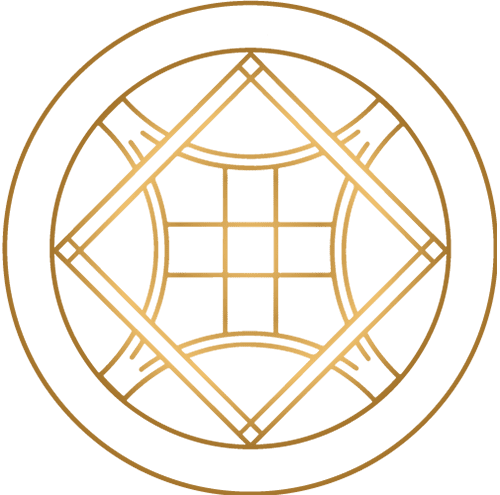Magic has held a timeless allure in human history, blending with religion, philosophy, and science to summon unseen forces. Across civilizations, it has been both a source of unity and a tool for control.
This essay follows magic’s path from ancient rituals to today’s world, exploring the strength of symbols, the mysteries of grimoires, debates over natural and supernatural forces, and its influence on social control, activism, and modern life through technology, gender, and performance.
“The world is full of magic things, patiently waiting for our senses to grow sharper”
W.B.Yeats.
Magic Spells: A Universal Concept.
Magic, in academic discourse, refers to practices and beliefs centered around the manipulation of unseen forces to influence events, outcomes, or perceptions in the material world. The term “magic” originates from the Greek word mageia, associated with the magi—Zoroastrian priests from Persia who were believed to possess supernatural knowledge.
Early civilizations, such as those in Egypt, Mesopotamia, and Greece, practiced forms of magic through rituals, charms, and symbols, intending to summon protection, healing, or insight from divine or cosmic forces.
Magic was often intertwined with religion, as priests, shamans, and healers held the knowledge to conduct sacred rituals, blending spiritual and supernatural elements. Over time, magic also began to contrast with emerging scientific perspectives, eventually marking it as a distinct, often controversial, practice that persisted in folklore, healing traditions, and esoteric schools of thought.
History of Magic in Ancient Civilizations: Cultural Significance
Egypt: Magic as a Divine Force
In ancient Egypt, magic, known as heka, was seen as an essential force that connected the physical and spiritual worlds. Egyptian priests practiced rituals to protect the living and the dead, with spells and charms woven into daily life and religious ceremonies.
Amulets such as the ankh symbolized life and divine protection, revealing how magic was deeply intertwined with Egyptian beliefs about the afterlife and cosmic balance.
Mesopotamia: Protection Through Magic Spells
Mesopotamian magic focused on defending against supernatural threats. Rituals, particularly exorcisms, were performed to ward off malevolent spirits, showing the importance of magical protection in daily life.
The Maqlû texts, a series of clay tablets, contain some of the earliest known incantations meant to repel curses. This ancient civilization’s approach to magic reveals how fear of the unknown drove the development of protective rituals.
The Indus Valley: Fertility and Prosperity Magic Spells
In the Indus Valley (modern-day Pakistan and northwest India), archaeological evidence suggests a connection between magic and fertility rites.
Figurines and seals featuring horned deities and mystical symbols indicate that early inhabitants believed in a magical influence over agricultural success. This practice shows how the history of magic in ancient societies was often linked to agriculture and survival.
China: Cosmic Harmony and Divination
Ancient Chinese civilization viewed magic as a way to maintain cosmic harmony. Charms known as fu were inscribed with special symbols to ward off evil spirits, while oracle bones were used in divination rituals to communicate with ancestors. This focus on balance and order reflects how Chinese magic was not only protective but also a way of aligning with nature and the universe.
Mesoamerica: Rituals for the Gods
In Mesoamerican civilizations like the Maya and Aztecs, magic was a tool for communing with the gods and maintaining cosmic order. Rituals, often involving bloodletting, were believed to please deities and ensure balance. Shamans served as spiritual guides and healers, using herbs, prayers, and ceremonies to connect with divine forces. For these cultures, magic was a central part of religious and social life.
Norse (Scandinavia): Seers and Rune Magic
Norse magic, or seiðr, was practiced by mystics and shamans known as völvas. They used rituals and rune casting to predict the future and manipulate fate, reflecting Norse beliefs in destiny and the influence of the gods. In Norse culture, magic provided insight and guidance, especially in uncertain times, reinforcing the connection between spiritual power and social resilience.
Sub-Saharan Africa: Ancestral Spirits and Healing Magic
In ancient African cultures, magic was closely connected to ancestral spirits. Shamans and healers performed rituals with herbs, talismans, and dance to heal, protect, and honor their ancestors. In West Africa, ceremonies often aimed at controlling weather and ensuring good harvests, revealing how magic in Africa centered on communal welfare and harmony with natural forces.
Polynesia: Mana and Spiritual Power
In Polynesian societies, magic revolved around mana, a spiritual energy believed to reside in people and objects. Kahunas, or priests, conducted rituals to harness mana for protection, guidance, and healing. This concept of mana reflects the Polynesian belief in a universe filled with interconnected spiritual forces, making magic a way to tap into the unseen powers of nature.
Celtic (Britain and Ireland): Nature and Sacred Spaces
The Celts practiced magic through the guidance of Druids, their priestly class, who were knowledgeable in the healing properties of plants and natural elements. Druids performed rituals at sacred sites, such as groves and springs, to honor spirits and seek guidance. This approach shows how Celtic magic was grounded in reverence for the natural world, where rituals maintained a connection between people and the environment.
The Cultural Significance of Magic in Ancient Times
The history of magic across ancient civilizations reveals how societies used it to explain, protect, and structure their world. Whether as a tool for defense, a means of communicating with gods, or a way to control natural forces, magic was essential to the social and spiritual lives of ancient peoples. These practices highlight humanity’s enduring desire to connect with the unknown and find harmony within the mysteries of life.
By examining the origins of magic, we gain insight into the powerful role it played in shaping human history and the ways it continues to influence cultural beliefs today. The history of magic across civilizations serves as a testament to the universal search for protection, meaning, and control in an unpredictable world.
The Role of Magic Spells in Ancient Rituals and Social Beliefs
Magic spells have been central to ancient societies, connecting people to spiritual realms and reinforcing cultural beliefs. Across diverse civilizations, spells served practical and symbolic purposes in healing, protection, and community rituals.
This concise exploration highlights the influence of magic spells on ancient rituals and the ways they strengthened social structures and provided psychological comfort.
Magic Spells in Ancient Rituals
In ancient cultures, spells were often a means to engage with the divine. Rituals incorporating spells used symbolic elements like herbs and chants, reflecting the belief that magic could bridge natural and supernatural worlds.
For example, herbal spells were common across East Asia and Celtic traditions, where practitioners combined plants with recitations for healing and protection.
Magic Spells and Social Cohesion
Magic spells also helped define social roles. Knowledge of spellcraft was typically held by community leaders or shamans, which reinforced their authority. Public rituals involving spells, such as those in Mesoamerican or Polynesian cultures, unified communities under shared beliefs, strengthening social bonds and expressing collective identity.
Psychological Comfort Through Magic Spells
Magic spells offered a sense of control and comfort, addressing fears and personal hopes. Rituals provided a way for individuals to feel empowered, appealing to spiritual forces for guidance or healing. This shared belief in magic contributed to societal cohesion, as communities found reassurance in the rituals and power of spells.
Magic spells were integral to ancient rituals and social beliefs, reinforcing spiritual connections, social hierarchies, and psychological resilience. These practices underscore magic’s lasting legacy in shaping human culture, revealing the timeless appeal of connecting with the unseen.
The Origins of Mythical Beings and Supernatural Entities
Mythical beings and supernatural entities have captivated human imagination for centuries, appearing in myths, legends, and folklore worldwide. These mystical figures embody universal themes such as heroism, fear, protection, and the unknown.
From ancient civilizations to modern pop culture, the allure of mythical beings remains a profound part of storytelling, belief systems, and cultural identity. It often originates from ancient beliefs, representing humanity’s effort to explain natural phenomena, emotions, and mysterious experiences.
Civilizations like Ancient Greece, Egypt, and Mesopotamia developed pantheons filled with gods, demigods, and spirits, each embodying aspects of nature, life, and death. These entities symbolized cosmic forces beyond human control, making the supernatural both revered and feared.
Types of Mythical Beings and Their Roles
Gods and Goddesses
Powerful deities representing creation, destruction, fertility, and the cosmos. They were often worshipped, with legends detailing their influence over life and nature.
Spirits and Ghosts
Often symbolizing the connection between the living and the dead, spirits appear in many cultures as ancestors, protectors, or entities haunting specific places or people.
Demons and Dark Forces
Representing malevolent energies or moral tests, demons appear in various religions and folklore as beings of darkness, chaos, and temptation.
Angels and Guardians
Benevolent beings are known for their protective qualities, often acting as messengers or guides. They are central in religious texts and folklore, symbolizing hope and guidance.
Shape-Shifters and Tricksters
Known for their transformative abilities, shape-shifters like werewolves or kitsune in Japanese folklore embody change, mystery, and often trickery.
Legendary Creatures
Unique creatures such as dragons, unicorns, and phoenixes feature prominently in myths, representing ideals, challenges, and natural elements.
Cultural Impact of Mythical Beings and the Supernatural
Mythical beings have a profound cultural impact, influencing art, literature, and societal values. Myths shape moral lessons, illustrate ideals of heroism, and explain human experiences. Legendary figures like Hercules,
Thor, and Anansi teach resilience, strength, and wit, offering timeless wisdom. Supernatural tales also provide a space for exploring themes of morality, spirituality, and humanity’s place in the universe.
Mythical Beings in Modern Culture
In contemporary times, mythical beings and supernatural elements have inspired literature, movies, and games. Stories of vampires, fairies, and gods remain popular, adapted into novels, movies, and television series. These modern representations continue to shape collective beliefs and cultural identities, revealing our fascination with the unknown and the mystical.
Why Mythical Beings Remain Relevant
The timeless appeal of mythical beings lies in their ability to resonate with universal emotions and questions. They bridge the gap between reality and fantasy, providing an escape, a source of wonder, and an avenue for exploring philosophical questions about life, death, and the afterlife. As symbols, they persist across generations, highlighting the enduring human desire for mystery and meaning.
Mythical beings and supernatural elements offer more than just entertainment; they connect us to cultural heritage, universal values, and the collective imagination. From the ancient gods to today’s popular folklore, these mystical figures inspire curiosity, exploration, and a sense of wonder that continues to shape human culture and belief systems.
Magic and the Supernatural: Demonology and Medieval Fear
In medieval Europe, magic’s connection to the supernatural took a dark turn, as Christian demonology increasingly portrayed it as heretical and dangerous. Demonology—a field dedicated to the study of demons and malevolent forces—cast magic spells as an influence that threatened both the church and societal order.
As a result, magic became linked to fear and suspicion, fueling accusations against marginalized groups, including Jews, Muslims, and alleged witches, often scapegoated for societal turmoil.
This association framed magic as a force of chaos, laying the groundwork for witch trials and embedding a legacy of fear around supernatural practices.
Demonology and the Rise of Fear-Based Associations
Demonology in medieval Europe was heavily influenced by Christian doctrine, which warned against supernatural practices as gateways to heresy and evil.
Theologians and inquisitors created detailed classifications of demons, framing magic as an interaction with dark, forbidden forces. This view aligned magic with sin, causing society to regard practitioners—whether real or accused—with suspicion and dread.
The Influence of Demonology: By categorizing magic as a demonic art, demonology intensified fear, equating magical practices with blasphemy and treason against the church. This perspective justified persecution as a means of protecting society from spiritual corruption.
Magic, Marginalized Groups, and Social Scapegoating
In a climate of religious fervor and social tension, demonology often fueled accusations against marginalized communities. Jews, Muslims, and others perceived as “outsiders” were frequently accused of witchcraft and magical practices.
Demonology presented these groups as threats to Christian stability, portraying them as conspirators working with dark forces. This scapegoating provided an outlet for societal anxieties, blaming the supernatural for plagues, misfortunes, and other crises.
Witch Trials and Social Control: Demonology’s impact extended to the witch trials, where accusations and confessions were shaped by fear. Trials targeted individuals accused of magical practices, reinforcing the belief that magic was a tangible, evil threat that needed eradication.
The Lasting Legacy of Demonology in Magic and Fear
Demonology’s influence on medieval views of magic left a lasting impact on how society perceives the supernatural. By aligning magic with demonic forces, demonology established a framework that linked magic with fear, suspicion, and social division. This legacy persisted well beyond the medieval period, cementing associations between magic, scapegoating, and societal anxiety.
The relationship between magic and the supernatural in medieval Europe was deeply shaped by demonology, transforming magic from a mystical practice into a feared, demonized force. This period’s fear-based associations left a legacy that continues to influence perceptions of magic, superstition, and social scapegoating, highlighting the power of belief in shaping cultural attitudes.
demonic influence, medieval Europe created a cultural legacy where superstition and suspicion governed perceptions of the supernatural. For those affected by negative energies or in need of protection from harmful influences,
Samuel Zohar Yanai provides powerful rituals to expel bad energy and remove black magic, helping clients find relief from unwanted spiritual impacts. His Kabbalistic practices focus on dismantling the effects of negative energies, creating a pathway toward spiritual protection and peace.
Renaissance Perspectives and the Influence on Science
The Legacy of Solomon’s Magic and Grimoires
The legendary King Solomon is often regarded as one of history’s most fascinating figures in the world of magic and mysticism. Known for his wisdom and mystical knowledge, Solomon’s legacy includes an array of grimoires, or magical texts, that have shaped occult practices and esoteric traditions throughout history.
The “Key of Solomon,” a prominent grimoire attributed to the king, reflects an intellectual approach to magic that combines ancient wisdom, ceremonial rites, and mystical symbols.
In this article, we explore Solomon’s profound influence on magical tradition, focusing on his grimoires and the intellectual framework they provided for generations of occultists.
Solomon’s Legacy: Wisdom, Mysticism, and Power
King Solomon, a figure of biblical renown, was famed for his unparalleled wisdom and reputed control over supernatural forces. Known as a ruler, scholar, and magician, Solomon’s legacy extends beyond his reign to influence various branches of mysticism and occultism.
According to legends, Solomon possessed knowledge that granted him command over spirits and hidden realms, employing this mystical insight for tasks that required divine intervention or protection.
The Origins of Solomon’s Magic
In biblical and later Jewish mysticism, Solomon was granted wisdom from God, a gift he used not only to govern but to delve into the mysteries of creation. Solomon’s name became synonymous with esoteric knowledge and mastery over both earthly and supernatural realms.
His connection to the spirit world was seen as a way of bridging human and divine wisdom, allowing him insight into the hidden mechanisms of the cosmos.
The Key of Solomon: A Grimoire of Ceremonial Magic
The “Key of Solomon,” also known as “Clavicula Salomonis,” is one of the most famous grimoires attributed to King Solomon. This text, appearing in various forms throughout the Middle Ages, is filled with detailed instructions on rituals, spells, and invocations to summon, command, or repel spiritual entities. It exemplifies the intellectual side of magic by focusing on the precise use of symbols, pentacles, and detailed ceremonial rites.
Key Elements of the Key of Solomon
Pentacles and Symbols: The grimoire contains a set of magical symbols, or pentacles, each associated with a specific purpose, such as protection, guidance, or control over spirits.
Rituals and Invocations: The text includes detailed instructions on how to perform rituals and invocations. These ceremonies are intended to align the practitioner with spiritual forces for various purposes.
Astrological Timing: The Key emphasizes the importance of timing, often linking rituals with planetary hours or phases of the moon, reflecting a deep understanding of celestial influences.
The Key of Solomon is notable not only for its contents but also for its scholarly approach to magic. Rather than relying solely on intuition, it requires the practitioner to follow precise, intellectual practices, often blending spiritual devotion with logical structure.
Grimoires and the Intellectual Tradition of Magic
Grimoires like the Key of Solomon offer a structured approach to magic, viewing it as both a science and an art. These texts were not simply manuals of spells; they also demanded intellectual rigor, as practitioners needed to understand complex symbols, spiritual hierarchies, and moral codes.
The Influence of Grimoires on Magic
Grimoires such as Solomon’s texts influenced the development of ceremonial magic, embedding a sense of intellectual pursuit within magical practices.
The meticulous nature of these texts elevated magic from folklore to a discipline involving study, ritual, and ethical considerations. Notable grimoires inspired by Solomon’s legacy include the “Lesser Key of Solomon” (or “Lemegeton”), “The Book of Abramelin,” and “Ars Notoria,” each containing methods for summoning, protection, and spiritual empowerment.
The Intellectual Side of Magic: Knowledge and Responsibility
Solomon’s grimoires introduced a new intellectual framework, treating magic as a form of wisdom that required ethical understanding and discipline.
Unlike folklore magic, which often centered on folk remedies and superstitions, ceremonial magic embraced knowledge as a path to spiritual mastery. Practitioners were urged to act responsibly, respecting spiritual laws and the balance between the natural and supernatural worlds.
Solomon’s legacy and the intellectual tradition of grimoires underscore the enduring appeal of magic as a blend of mysticism, wisdom, and structured practice. By bridging the mystical with the intellectual, grimoires like the Key of Solomon continue to influence modern esoteric practices, offering insights into the ancient wisdom that underpins ceremonial magic.
Solomon’s legacy endures as a symbol of magic’s power, encouraging those who seek knowledge to approach it with both reverence and understanding.
The legacy of Solomon’s grimoires highlights a disciplined and respectful approach to mystical knowledge, emphasizing the importance of balance between spiritual insight and ethical responsibility.
For those seeking healing within this profound tradition, Samuel Zohar Yanai a spiritual healer and black magic removal expert provides Kabbalistic healing services that connect individuals to the wisdom of ancient practices.
His methods are rooted in the ethical principles of Kabbalah, offering a structured approach to neutralizing harmful energies and restoring spiritual well-being.
Influence of Magic on Science: The Renaissance and Beyond
During the Renaissance, magic and science converged, particularly in alchemy, astronomy, and medicine. Alchemists, seeking the philosopher’s stone, bridged mystical beliefs with empirical studies.
Figures like Paracelsus and Giordano Bruno advocated magia naturalis, or natural magic, which pursued nature’s mysteries without venturing into forbidden or demonic practices. This distinction between natural and demonic magic provided the foundation for a new scientific inquiry, turning magic into a disciplined pursuit of knowledge.
Symbols and Language: From Magic Rituals to Words
Symbols, language, and rituals have long been essential elements in the world of magic and magic spells. Across ancient and modern practices, these elements serve as tools for focusing intention, invoking spiritual forces, and creating a bridge between the physical and mystical realms.
Symbols and Language in Early Magic
In ancient cultures, symbols and words were revered for their ability to channel spiritual energies and align intentions with divine forces. Runes, sacred symbols, and ritual chants were used to invoke protection and communicate with unseen realms.
These symbols became tools of ceremonial magic, acting as conduits for connecting the practitioner with the spiritual world. Rituals using specific symbols marked sacred spaces, fostering a sense of connection and purpose.
Language in Ritualistic Magic
Language, in the form of chants, affirmations, and spells, has always been essential in ritualistic magic. Words carry vibrational energy, believed to influence surroundings and invoke powerful energies.
Carefully crafted phrases and incantations served as focal points, amplifying the intent of the ritual. Clear, direct language in spells allowed practitioners to concentrate their energies, aligning their desires with a clear outcome.
Incantations: Repeating specific phrases aligned the practitioner with desired energies, reinforcing their active role in the ritual.
Affirmative Spells: Spells often involved affirmations, where intentional language guided focus and directed energy toward achieving a goal.
Ceremonial Magic In Medieval and Renaissance
Medieval and Renaissance magic emphasized symbols and rituals within the context of celestial timing and alignment. This period saw a flourishing of ceremonial texts that guided practitioners in using symbols like the hexagram and sacred seals.
Rituals linked to lunar phases, such as new moon magic, highlighted the symbolic significance of timing, with practitioners aligning their work with natural cycles for enhanced effects.
Modern Magic: Adapting Symbols and Language
Today, symbols and language in magic have expanded, incorporating diverse influences while retaining core principles. Practitioners use crystals, candles, and personal symbols to represent intentions, while new moon rituals focus on manifestation and growth.
This blend of traditional and contemporary practices allows for flexibility, helping individuals create rituals that resonate with personal beliefs.
Personal Symbols: Modern practitioners often personalize symbols, using items with special meaning to focus their energy and intention.
Widespread Influence: Symbols like tarot cards and zodiac signs have crossed into popular culture, serving as tools for self-reflection and personal guidance.
Why Symbols and Language Endure in Magic
Symbols and language form the backbone of magic, providing clarity and focus that elevate the impact of rituals. Whether used for protection, growth, or connection, these elements guide practitioners to align their energies, enhancing the transformative power of magic. Their enduring presence across time highlights a universal need for tools that bridge the physical and spiritual worlds.
From ancient invocations to modern-day rituals, symbols and language remain essential to the practice of magic. These tools, embedded in centuries of tradition, offer practitioners a pathway to tap into unseen forces and harness their intentions, making magic both a personal and timeless journey.
Understanding the role of words, symbols, and rituals is key to appreciating magic’s power across history and into the present day.
Exploring Types of Magic: From Ritualistic to Elemental and Beyond
Magic encompasses a vast array of practices, each with unique methods and purposes. From ceremonial and ritual magic to elemental and sympathetic magic, different types offer diverse approaches to channeling and shaping energies. In this guide, we explore the primary types of magic, their characteristics, and how they are practiced across cultures and beliefs.
Ritual Magic
Ritual magic involves carefully crafted ceremonies and structured rituals that invoke specific energies or entities. Practitioners use symbolic tools, chants, and sequences to create a controlled environment for directing intentions and achieving spiritual alignment.
Elemental Magic
Elemental magic focuses on the forces of nature, such as earth, air, fire, and water. Each element has distinct qualities and is believed to govern specific aspects of life. Practitioners harness the energy of one or more elements to manifest desired outcomes or connect with natural forces.
Sympathetic Magic
Sympathetic magic operates on the principle that “like attracts like.” Practitioners use symbols or objects associated with their desired outcome, such as voodoo dolls or charms, believing these items can influence people or situations through a symbolic connection.
Divination Magic
Divination is a type of magic focused on gaining insight or predicting future events. Methods such as tarot, scrying, and astrology are used to interpret signs and symbols, providing guidance and understanding for the practitioner.
Alchemical Magic
Alchemical magic combines physical transformation with spiritual pursuit, aiming to purify the mind and spirit. Alchemy, known historically for attempts to turn base metals into gold, also symbolizes personal transformation, encouraging practitioners to attain enlightenment.
Healing Magic
Healing magic is centered on restoring health and balance, often incorporating herbs, energy work, and spiritual rituals. Practitioners focus on removing blockages and fostering harmony in the body, mind, and spirit.
These types of magic each offer unique perspectives and methods for interacting with spiritual or natural forces. By understanding the characteristics of each type, practitioners and enthusiasts alike can explore the wide-ranging possibilities magic provides, from personal transformation to connection with the natural world.
Healing magic highlights the profound connection between spirituality and well-being, drawing on techniques like energy work, herbal remedies, and spiritual rituals to restore balance.
For those seeking guidance on their healing journey, Samuel Zohar Yanai provides expert support as a black magic healer, offering Kabbalistic cleansing and energy protection rituals.
His approach focuses on identifying and removing spells and negative energy influences and fostering harmony within the mind, body, and spirit. Connect with Samuel Zohar Yanai for trusted spiritual healing and protection practices to support your journey to balance and renewal.
Ethical and Social Control Through Magic
The Boundaries of Magic: Good and Evil Intentions
Throughout history, magic has carried an ethical duality, embodying both benevolent and malevolent potential. Magia could serve as a healing, protective force or as a destructive, harmful one, depending on the practitioner’s intentions.
This ethical complexity is mirrored in magic’s power to alter perceptions, drawing lines between good and evil forms of practice.
Magic as Social Control: Laws, Fear, and Witchcraft
Magic was also a powerful tool for enforcing social control. In medieval Europe, witchcraft laws and fear of curses helped authorities maintain order, branding witchcraft as dangerous and criminal.
During the witch hunts, accusations were used to suppress dissent and enforce obedience. Magic’s power to evoke fear reinforced its role as a mechanism of control, illustrating how societies wielded the concept of dark forces to regulate behavior and ensure loyalty.
Modern Perspectives on Magic and Social Change
Magic as a Tool for Social Change: Historical and Contemporary Uses
Magic has frequently been a symbol of resistance and change, especially for marginalized groups. In the Middle Ages, heretics were often accused of practicing magic as they challenged the Church.
In contemporary society, feminist and social justice movements have reclaimed the symbols of witchcraft, using them to empower and unite against traditional structures. This reclamation of magic underscores its adaptability and ongoing role as a tool for social empowerment and transformation.
The Revival of Witchcraft in Modern Society
The resurgence of witchcraft reflects modern society’s shifting values around spirituality and autonomy. Today’s witchcraft practices emphasize ecological awareness, social justice, and personal agency, transforming a once-feared tradition into one of self-expression and community.
This revival illustrates society’s renewed interest in magic as both a personal and collective identity marker, reclaiming a practice once persecuted and feared.
The modern revival of witchcraft underscores society’s evolving relationship with spirituality, autonomy, and identity, as people reconnect with traditions once considered taboo. For those interested in reclaiming spiritual practices safely and ethically, Samuel Zohar Yanai provides professional guidance in Witchcraft Removal and spiritual healing and cleansing.
His expertise in Kabbalistic methods offers a structured approach to removing negative energies and empowering individuals on their spiritual journeys. Contact Samuel Zohar Yanai to explore powerful methods for cleansing and spiritual protection, helping you embrace a renewed connection with your spiritual self.
Magic, Technology, and Contemporary Spirituality
Magic and Technology: Parallels in Power and Influence
The parallels between magic and technology reveal humanity’s enduring fascination with power, control, and mystery. Just as magic once seemed to control unseen forces, technology now performs what was once miraculous.
Both magic and technology carry ethical questions about human influence and agency, bridging historical mysticism with today’s digital world. This relationship shows how the mystical allure of control continues to shape society’s relationship with knowledge and innovation.
Magic in Contemporary Religious Practices and New Age Spirituality
Modern spirituality has a complex relationship with magic, incorporating it selectively. Neopaganism and New Age movements often embrace magical practices as a means of connection with nature and the divine.
By contrast, some traditional religions avoid magic to maintain a boundary between faith and superstition. This divergence illustrates how magic persists within spirituality, offering pathways to both personal and communal connection while challenging societal norms.
Magic in Theater and Performance: Cultural Impact and Allure”
Magic has captivated audiences in theater and performance for centuries, from ancient rituals aimed at appeasing gods to Shakespearean plays filled with supernatural themes.
Today, modern magicians continue this tradition through illusions that inspire wonder, bridging ancient practices with contemporary entertainment. This cultural impact highlights magic’s enduring appeal and its power to engage audiences through a suspension of disbelief.
Ancient Roots of Magic in Performance
In ancient cultures, theatrical performances often involved rituals and magical elements to honor deities or influence natural forces.
These early forms of performance connected audiences to the mystical, providing both entertainment and a spiritual experience. The incorporation of supernatural themes created a powerful sense of awe, setting the stage for magic as a celebrated art form.
Magic and the Supernatural in Classic Theater
Shakespeare’s works, such as Macbeth and The Tempest, reflect the deep connection between theater and magic, exploring themes of power, fate, and the unknown. Supernatural characters and magical events within these plays captured the public’s fascination with the mystical, influencing the cultural perception of magic in theater.
Modern Magic and Illusion in Entertainment
In today’s world, magic remains an essential element of live performances, television, and film. Modern magicians use advanced techniques and illusions to recreate the enchantment of ancient rituals, captivating audiences by blending skill and mystery.
By invoking the supernatural, these performances tap into timeless themes that resonate with viewers, keeping magic’s allure alive.
The Cultural Impact of Magic in Performance
The presence of magic in theater and performance underscores society’s fascination with the mystical and the unknown. By creating a suspension of disbelief, magic in entertainment allows audiences to explore themes of wonder, mystery, and transformation. This cultural impact reinforces the enduring connection between magic, storytelling, and human curiosity.
From ancient rituals to modern illusions, magic in theater has had a profound cultural impact, captivating audiences and connecting them with timeless themes.
Whether through classic literature or contemporary performance, magic’s ability to inspire awe and wonder continues to bridge the mystical and the real, securing its place as a powerful art form in entertainment.
Magic and Power: The Role of Women in Witchcraft and Sorcery
Historically, women have often turned to magic and sorcery to navigate patriarchal structures, gaining a measure of influence within restrictive social systems. In times when legal rights were denied to women, accusations of witchcraft frequently masked their attempts to assert autonomy.
Women’s association with magic persists in contemporary culture, where witchcraft movements promote themes of empowerment, resilience, and the redefinition of traditional roles.
Magic in the Mind: Illusions, Dreams, and the Role of the Shaman
Deception and Misdirection: Power of Perception in Magic
Magic’s psychological effects are as significant as its mystical appeal. The art of illusion, used in ancient rituals and modern magic shows, manipulates human perception, creating a sense of wonder and mystery.
By deceiving and misdirecting the mind, magic demonstrates the human mind’s susceptibility to belief, offering insights into how perception shapes experiences.
Dreams and Magic: Connecting the Subconscious with Rituals
Dreams have long been a medium for connecting with the subconscious, revealing insights, or guiding decisions. Many cultures view dreams as divinatory, using them to communicate with spiritual realms.
This connection between the subconscious and magical practices emphasizes how magic often bridges the hidden parts of the mind with the world of ritual and meaning.
The Role of the Shaman: Community Healer and Spiritual Guide
In indigenous cultures, the shaman serves as a healer, guide, and intermediary between the physical and spiritual realms. Shamans use magic to sustain harmony within the community, providing a unifying force that blends spirituality and healing.
The shaman’s role illustrates magic as a collective practice, deeply embedded in community care and cultural continuity.
Magic’s Legacy: From Ancient Rituals to Modern Spiritual Cleansing
Magic’s evolution mirrors humanity’s quest for understanding and control over unseen forces, spanning ancient rituals, philosophical debates, societal struggles, and modern revivals.
From ancient spells to digital wonders, magic remains a potent symbol of the human desire to transcend the ordinary, offering a powerful lens through which to examine the intersections of culture, science, and spirituality. Through its journey from condemnation to curiosity, magic continues to inspire reflection on power, belief, and the boundaries of the human experience.
Samuel Zohar Yanai, a kabbalistic shaman, provides expert services to counter and cleanse the lingering effects of witchcraft, providing powerful Kabbalistic practices to help clients recover their spiritual well-being.His methods focus on cutting ties with malicious forces and guiding clients to reclaim their inner peace.
For those impacted by spells or curses, Samuel’s approach provides effective protection rituals and disposal of harmful energies, creating a path to break free from unwanted influences. Contact us by Email, phone, or WhatsApp to learn more.
“The true alchemists do not change lead into gold, they change the world into words”
William H. Guss














